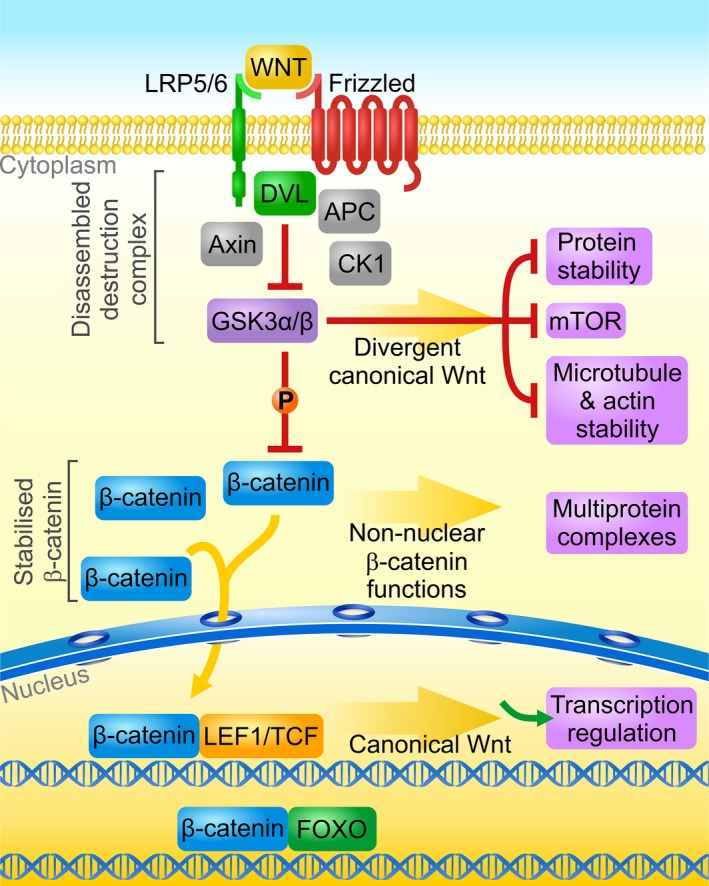Figure 1.

Canonical Wnt/β‐catenin and divergent signaling pathways. The binding of a Wnt ligand to a Frizzled receptor and LRP5/6 co‐receptor, followed by the recruitment of DVL to the receptor complex, leads to translocation and inhibition of the destruction complex, which consists of the kinase GSK3α/β, Adenomatous Polyposis Coli (APC) and Axin. The phosphorylation of β‐catenin by GSK3α/β in the active destruction complex primes this protein for proteasomal degradation (not shown). Upon inhibition of the complex, β‐catenin accumulates in the cytoplasm and translocates into the nucleus where it activates gene transcription as a co‐activator of LEF1/TCFs. This canonical pathway can branch downstream (a) GSK3α/β inhibition (e.g., to slow protein degradation during mitosis, activate the mTOR pathway, or stabilize the cytoskeleton), (b) β‐catenin stabilization (e.g., to stabilize cell adhesion with cadherins or facilitate the assembly of PDZ domain‐containing proteins), and (c) β‐catenin nuclear translocation (to activate gene transcription by interacting with nuclear receptors, FOXO and other transcription factors).
